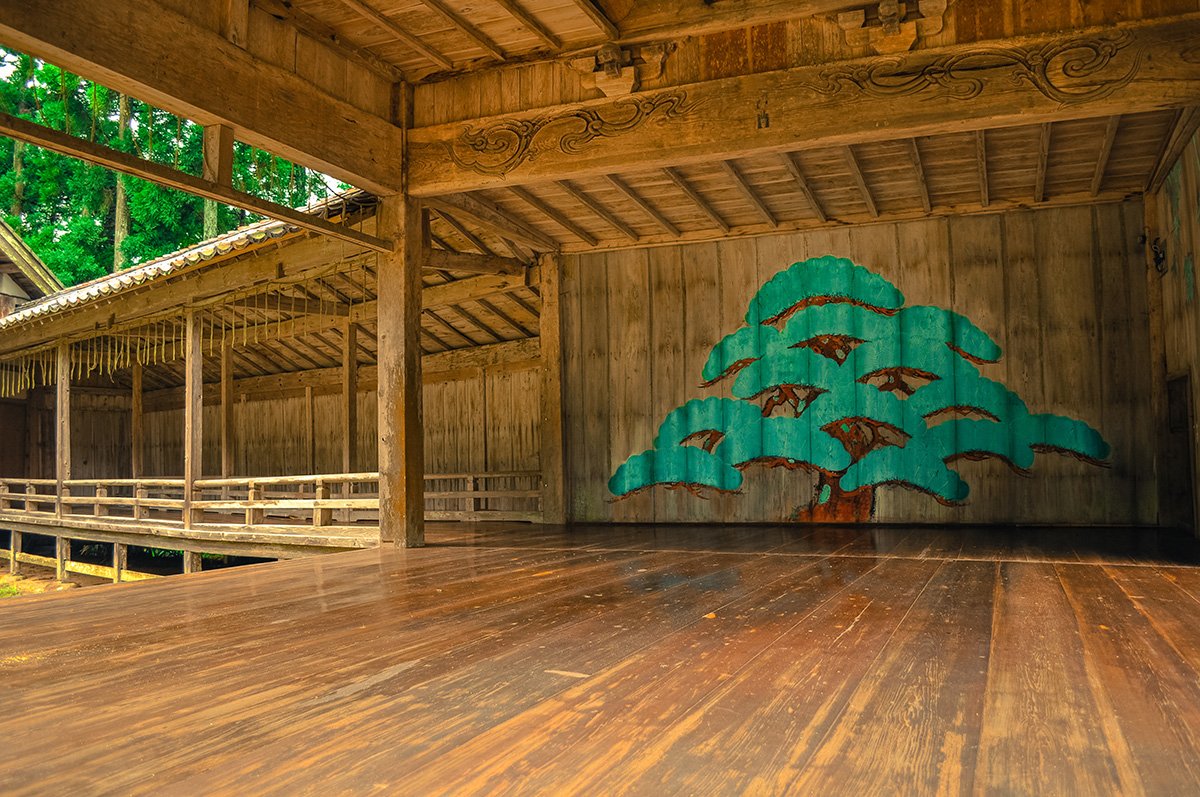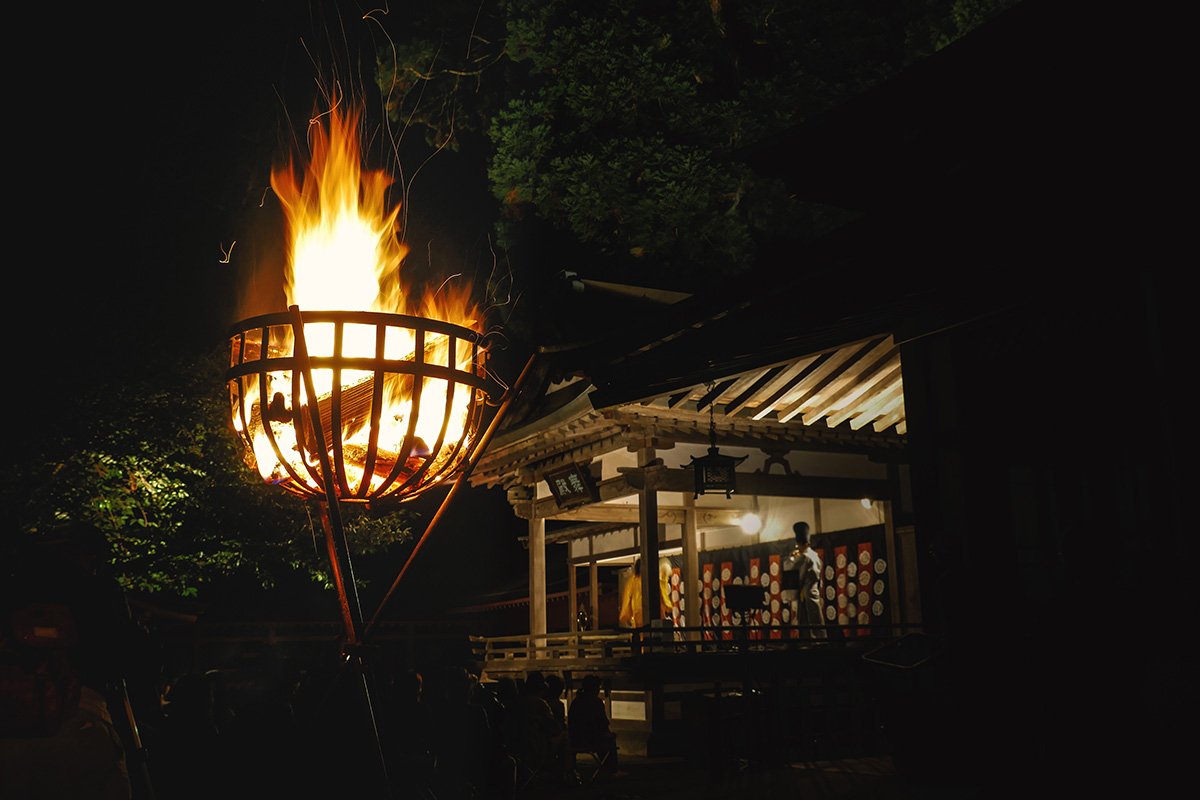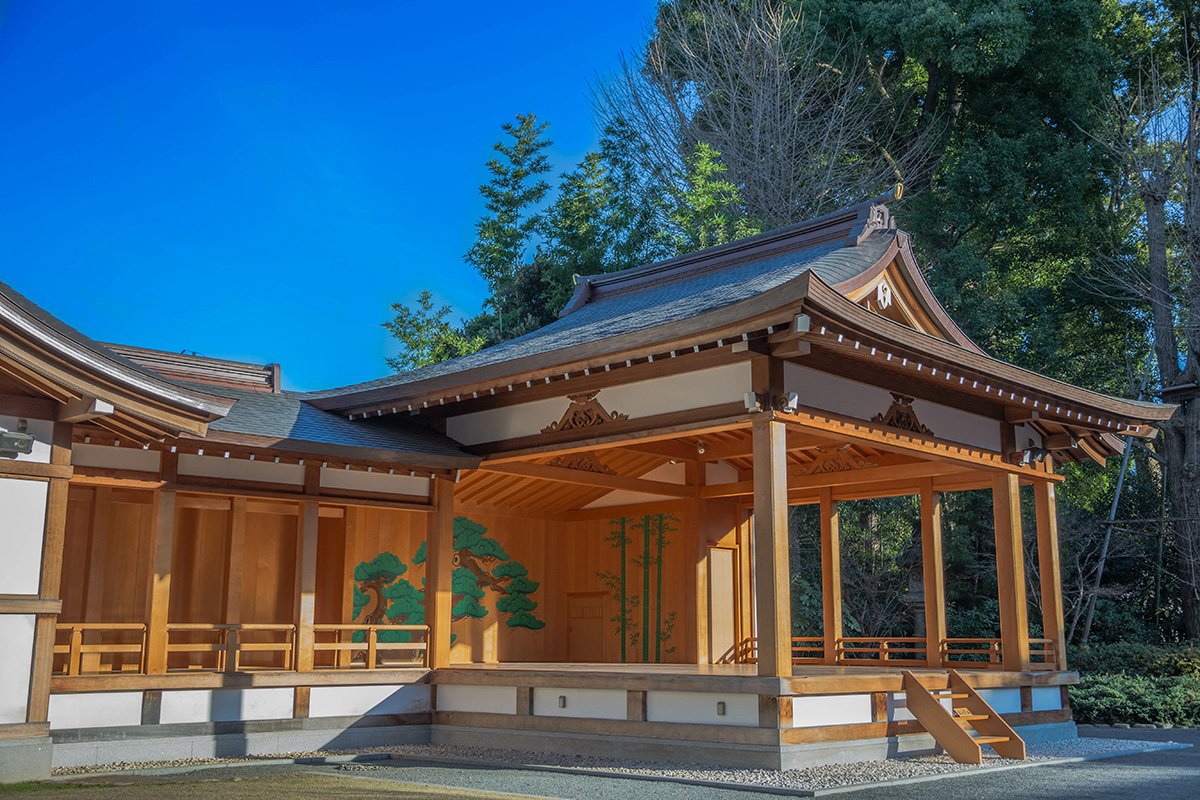I'm interested in Noh and Kyogen, but I don't really understand the meanings or differences between them...
In this article, we will explain the general definitions of Noh and Kyogen for those who have questions like these.
In the second half, we will introduce three pieces that we recommend for first-time visitors.
If you're interested in the types and differences of traditional Japanese performing arts, be sure to check out this article.
What are Noh and Kyogen?

Noh and Kyogen are generally perceived as being very similar, but there are differences between them as follows:
Noh is a musical performance that is characterized by the wearing of masks.
Noh is a performing art that was introduced from China 1,300 years ago.
A distinctive feature of the plays is that they are performed using masks such as "Noh masks" or "Omote" and many of the stories are based on myths and historical tales.
Noh has the appeal of being a musical or operatic stage in which the story progresses in sync with the music. Another major feature of Noh is the frequent use of prose in the lines, such as "~desourou."
Kyogen is a comedy that progresses with a comedic touch
Kyogen is a performing art that originated 650 years ago.
The biggest difference from Noh is that the play progresses without masks, with the actors facing the audience.
Kyogen is often a comedy that depicts everyday life in a humorous way. Humorous conversations such as "This is it" often appear in the stories.
Three recommended plays for first-time Noh fans

For those who are seeing Noh for the first time, we recommend the following three plays, which have easy-to-understand plots.
Earth Spider
The story of Tsuchigumo is that Minamoto no Yorimitsu, who is ill and bedridden, is visited by his maid Kocho, who then visits him, and a spider spirit appears.It is a very simple and clear play, depicting the defeat of the earth spider spirit by his attendant and a lone warrior.
The spider's threads, which are released radially, have a vividness and beauty that captivates the audience.
Therefore, even if you are nervous about seeing Noh for the first time, this will be a work that will leave a strong impression and captivate you.
Rashomon
Rashomon is a story about demon slaying set in a real gate in Heian-kyo.
This play is a multi-stage Noh play with a first and second act.
In the first half of the play, Minamoto no Yorimitsu and Hirai Yasumasa appear one after the other, evoking the image of powerful soldiers. Meanwhile, in the second half, a fierce battle with a demon carrying a helmet begins. The play is short, lasting just 50 minutes, so it's recommended even for first-time Noh viewers.
There are many interesting plays for the main character of Rashomon, the shite.
Therefore, it may be better to focus on the movements of the shite rather than the entire stage.
Dojoji Temple
The setting of Dojoji is the temple grounds some time after the Anchin and Kiyohime incident.
The story is about a woman who became mad with jealousy towards a monk she had once loved, and transformed into a snake, burning down the monk, the temple bell, and everything else.
The highlight of Dojoji is the scene where the Shirabyoshi, the leading lady, jumps into the bell and a woman appears transformed into a snake. The transformation from Shirabyoshi into a snake takes place inside the bell. The play is very dynamic, and the two hours pass by in the blink of an eye.
Three recommended plays for those new to Kyogen

For those experiencing Kyogen for the first time, we recommend the following three plays.
Stick binding
Bondage with a Stick is a relatively new type of Kyogen play.
The story begins with the master, who is about to leave, tying up Tarokaja and Jirokaja with poles to prevent them from stealing and drinking sake. However, even though they are tied up, the two manage to drink the sake by using their ingenuity.
One of the highlights of this humorous story is when the two dancers dance with their hands tied.
Kakiyamabushi
The Persimmon Yamabushi is a story about a yamabushi who, unable to bear the hunger during his training, steals a persimmon and eats it, and the farm owner who comes on patrol.
In an attempt to meet the farm owner's unreasonable demands, the mountain ascetic desperately imitates the sounds of animals.
This is a fun performance that will have many audience members laughing at the sight. Another attraction is that the shite actor's high expressiveness makes it seem as if he is standing in a tall persimmon tree.
Among the many Kyogen plays, Kakiyamabushi is one that is often used as educational material for children.
Therefore, even those who find traditional performing arts such as Noh and Kyogen difficult will be able to naturally get into the story of this performance.
Buddhist sculptor
The Busshi is a humorous play about a man who comes to the capital to buy a Buddhist statue and a con man who tries to trick him out of his money.
Because the story is simple, it is an easy choice not only for Kyogen beginners but also for school appreciation classes.
The argument between a con man who calls himself a Buddhist sculptor and a country bumpkin who touches the finished Buddha statue without knowing it is a story that elicits laughter from many audience members. In this performance, a Kyogen mask called "Otsu" is used to represent the Buddha statue.
summary
This time, we've explained in detail the definitions and specific differences between Noh and Kyogen to clear up any questions you may have about them. There are many Noh and Kyogen plays aimed at beginners. If you're interested, be sure to check out the popular plays introduced on this page.
This article has been partially re-edited by KARUTA from an article originally published on "Nihongo Biyori."
Any unauthorized reproduction or use of the contents, text, images, illustrations, etc. of this website is strictly prohibited.
